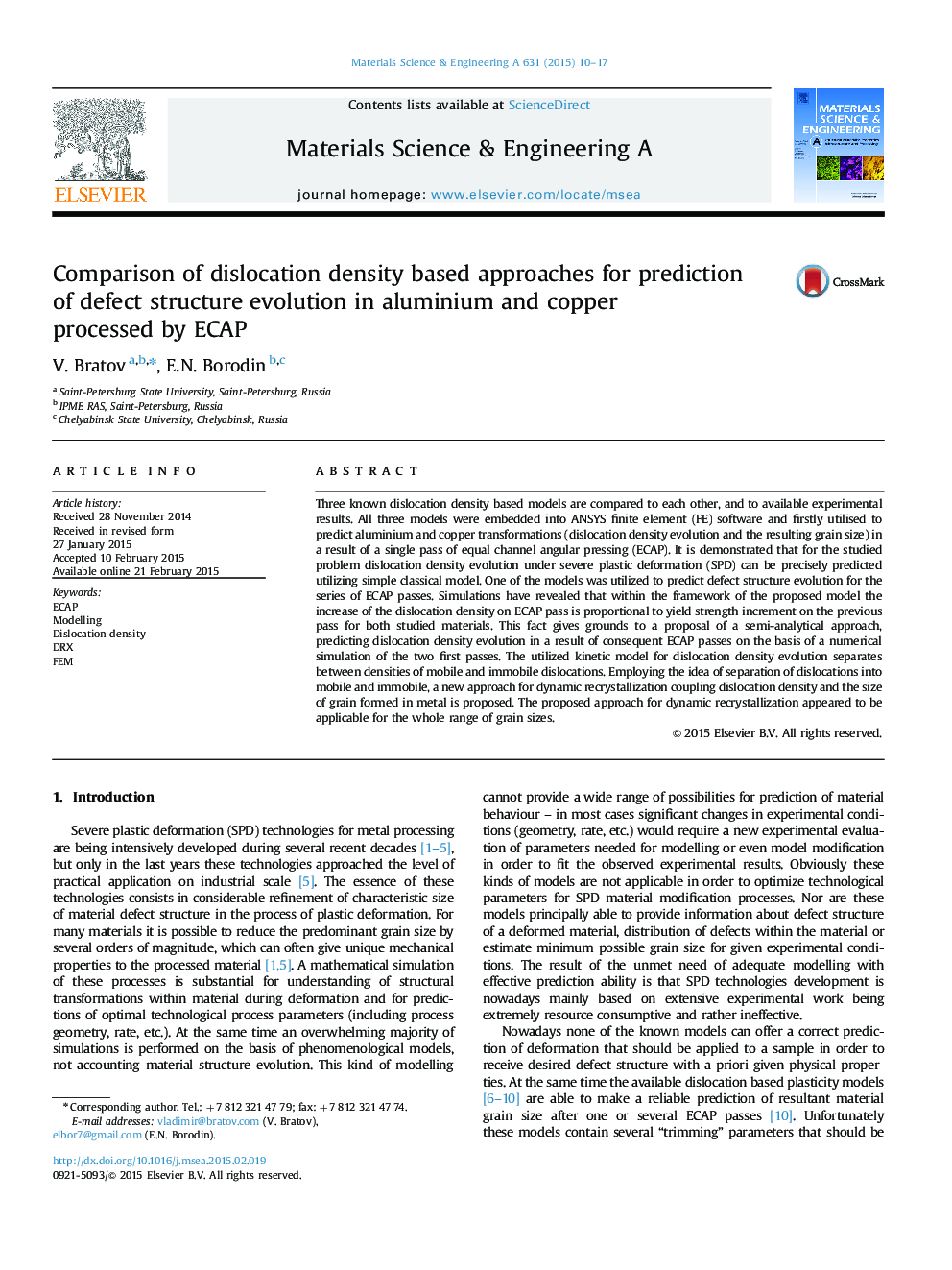| Article ID | Journal | Published Year | Pages | File Type |
|---|---|---|---|---|
| 1574401 | Materials Science and Engineering: A | 2015 | 8 Pages |
Abstract
Three known dislocation density based models are compared to each other, and to available experimental results. All three models were embedded into ANSYS finite element (FE) software and firstly utilised to predict aluminium and copper transformations (dislocation density evolution and the resulting grain size) in a result of a single pass of equal channel angular pressing (ECAP). It is demonstrated that for the studied problem dislocation density evolution under severe plastic deformation (SPD) can be precisely predicted utilizing simple classical model. One of the models was utilized to predict defect structure evolution for the series of ECAP passes. Simulations have revealed that within the framework of the proposed model the increase of the dislocation density on ECAP pass is proportional to yield strength increment on the previous pass for both studied materials. This fact gives grounds to a proposal of a semi-analytical approach, predicting dislocation density evolution in a result of consequent ECAP passes on the basis of a numerical simulation of the two first passes. The utilized kinetic model for dislocation density evolution separates between densities of mobile and immobile dislocations. Employing the idea of separation of dislocations into mobile and immobile, a new approach for dynamic recrystallization coupling dislocation density and the size of grain formed in metal is proposed. The proposed approach for dynamic recrystallization appeared to be applicable for the whole range of grain sizes.
Related Topics
Physical Sciences and Engineering
Materials Science
Materials Science (General)
Authors
V. Bratov, E.N. Borodin,
